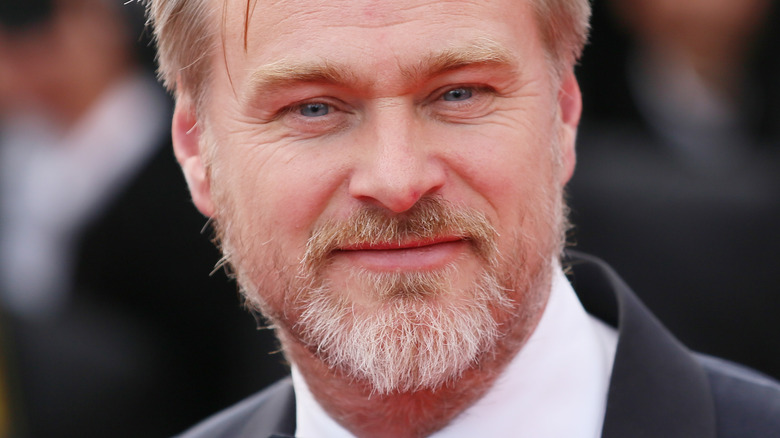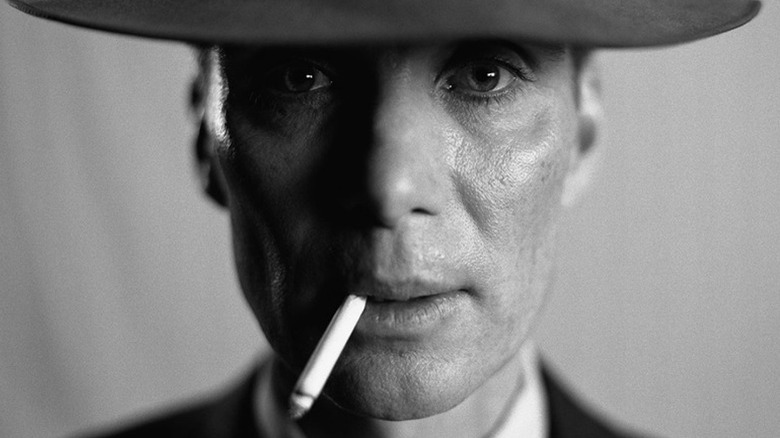Christopher Nolan's Oppenheimer Goes Nuclear Without The Use Of CGI
A writer-director with major chops when it comes to mind-blowing special effects in his films from "The Dark Knight" to "Interstellar," Christopher Nolan actually decided to step away from the digital magic for one of the major set pieces in his upcoming biopic, "Oppenheimer."
Chronicling the life and work of the man popularly referred to as "the father of the atomic bomb," the film will zero in on the renowned physicist's pivotal role in the Allies' top-secret WWII race against the clock to create a super weapon capable of ending the war. Relocated along with other elite scientists to a remote New Mexico testing site, J. Robert Oppenheimer, portrayed by Cillian Murphy, became a key player in one of the most legendary military/scientific operations in history — the Manhattan Project. Ultimately resulting in the successful development of the two bombs that were dropped on Hiroshima and Nagasaki, the unprecedented weapons led to Japan's surrender, quickly ending the conflict in the Pacific and concluding the Second World War. And while Nolan's "Oppenheimer" depicts the creation of what at the time was the most powerful explosive weapon ever devised, the director decided to show its awesome power using real-world, physical images as opposed to digital wizardry.
Christopher Nolan credited his filmmaking team with helping to visualize an atomic explosion sans CGI
Speaking to Total Film (via Games Radar), the director explained that one of the major overall hurdles in filming "Oppenheimer" was the remote location that served as the Los Alamos, New Mexico location of the movie's historic WWII Trinity nuclear research and testing site. With respect to working at the site itself, Christopher Nolan said he brought visual effects supervisor Andrew Jackson onto the film early in the process and began "looking at how we could do a lot of the visual elements of the film practically [i.e., non-CGI] with my team ... up on a mesa in New Mexico in extraordinary weather, a lot of which was needed for the film."
Nolan went on to describe the film as "A story of immense scope and scale. There were big logistical challenges." Concerning capturing the awesome impact of a nuclear blast using actual physical elements, the director said, "I think recreating the Trinity test [the first nuclear weapon detonation, in New Mexico] without the use of computer graphics, was a huge challenge to take on." But Nolan adds that he credits his dedicated film crew for helping to deliver the results he needed amid the harsh filming conditions, saying, "I'm thrilled with what my team has been able to achieve."

